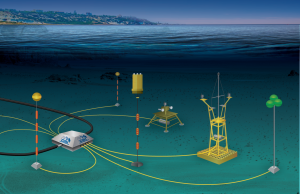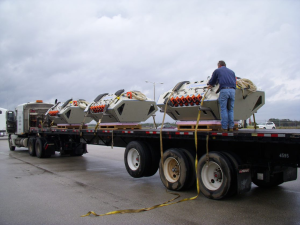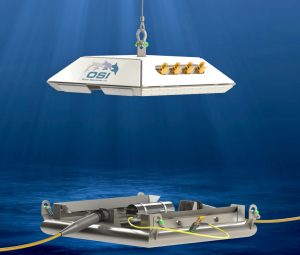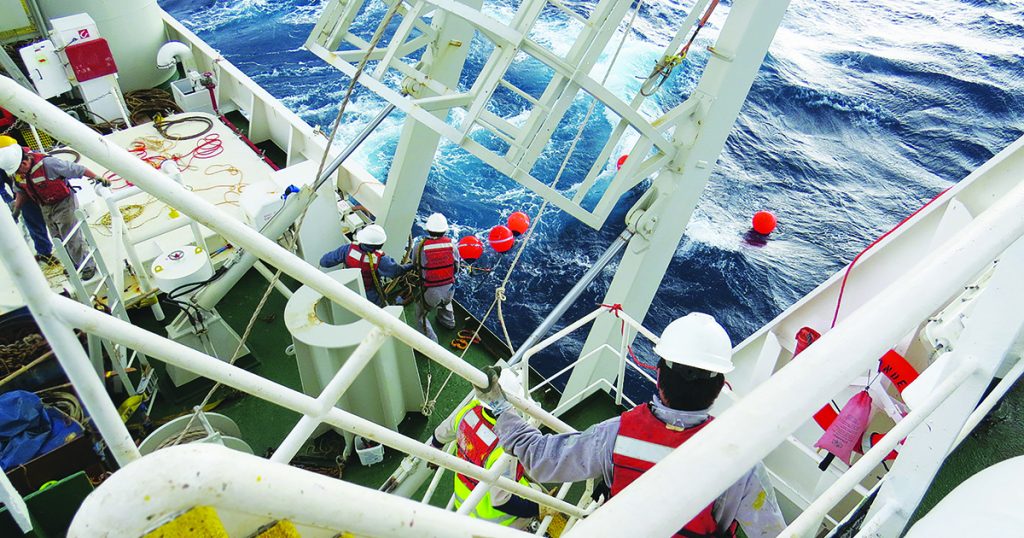Despite the very public and often contentious debate surrounding the so-called climate crisis, most world leaders and the United Nations (UN) Secretary General agree that climate change and the release of harmful greenhouse gasses are a very real threat to human existence. The UN Secretary General has categorized climate change as the defining issue of our age and the central challenge of for this century’s civilizations.
Now more than ever, actionable data and information are needed by the scientific community and policymakers to assist them in mitigating the potential impacts of climate change. According to the UN, the data needed in the fight to save ‘Our biggest ally—the Oceans’ will come from Ocean Observing Systems (OOS). Ocean Observing Systems are instrumental in enhancing scientific research in critical areas, such as assessing the growing climate threats and their impacts on vulnerable coastal areas—home to more than 650 million people, nearly 8% of the planet’s population.
Development & Installation of OOS
At the forefront of OOS, OSI has been continuing the development of the patented Sea-2-Sat Variable Buoy (STSVB) system. We have successfully completed initial and system demonstration sea trials of the advanced seabed to satellite data transmission system. The STSVB system provides the ocean industry with a unique capability to link subsea sensors and equipment to satellite communications in a protected manner and in a wide range of water depths. The key to this new technology is the data transmission system resides beneath the surface in a variable buoyancy buoy, that comes to the surface when the weather is stable and the area is clear of vessels. At the surface, the buoy begins to transmit and receive data and then returns to its operating depth.

The Sea-2-Sat Node system was developed by OSI for ocean telecommunications and observing services. (Image credit: OSI)
Another notable example of OSI’s oceanographic system development is the Poseidon Network in the Mediterranean Sea, an 800 km fiber optic ring with two landings on the southern coast of Cyprus. OSI led the design, installation, and operation of the Poseidon Network in two phases between 2008 and 2018. The ring included the Offshore Communications Backbone (OCB) that has five science and communication nodes placed in 2000 m water depth along Cyprus’ southern EEZ boundary. During this project, OSI constructed a constant voltage power supply to support the science nodes while a constant current supply powered in-line repeaters; this enabled one of the industry’s first applications of a dual-conductor cable.
The Poseidon Network was built as a dual-purpose project to serve as a telecommunications backbone while offering multiple connection points on each node, providing communications and power to third-party subsea environmental monitoring equipment and science experiments.
A Customizable OceanHub
The OceanHub is a subsea data hub that enables third-party oceanographic sensors to be connected to a shore end fiber optic cable that provides power and communication. Capable of long term in situ measurement and real-time access to the collected information, the OceanHub can provide up to four wet mate connections, allowing multiple compliant equipment sets to be connected. This also allows for recovery and replacement of any third-party equipment set without needing to recover the Ocean Hub and the integrated cable.

The OSI Node system delivery for ocean deployment and offshore operations. (Image credit: OSI)
The OceanHub design includes a marine-grade aluminum frame and a titanium connector panel with a pressure housing that can be deployed at an operating depth of 3000 m. The OceanHub concept is compatible with telecommunications cables and umbilicals and will feature a fully managed industrial control device with a web interface.
The OceanHub is one of the many tools available to provide real-time information to the scientific community. In addition to the ocean observing capabilities of the OceanHub, it can also be used for tsunami early warning, earthquake detection, and seafloor changes critical to the need for the collection of more data points vital to scientific research.
Harnessing Sustainable Development Goals
The 2030 Agenda for Sustainable Development, adopted by all United Nations Member States in 2015, provides a shared blueprint. At its heart are the 17 Sustainable Development Goals (SDGs), which are an urgent call for action by all countries—developed and developing—in a global partnership. A key outcome is tackling climate change and preservation of the world’s oceans and forests.
To support the generation of sound, actionable data, OSI, in partnership with Samara Data, formed Subsea Data Systems (SDS)—a category leader in ocean research and seismology. SDS—as part of the International Telecommunication Union (ITU), World Meteorological Organization (WMO), and the Intergovernmental Oceanographic Commission of UNESCO (IOC) Joint Task Force for Science Monitoring and Reliable Telecommunications (JTF SMART)—is working to develop the SMART Repeater. The task force has been in existence for over 10 years with the goal of integrating seismic, absolute pressure, and temperature sensing into submarine cable repeaters.
With over a million miles of submarine fiber optic cable on the ocean floor at depths of over 11,000 m and with new cables being installed at a rate unmatched in recent decades—with no imminent slowdown in sight—the SMART Repeater offers an opportunity to develop a critical real-time view of seafloor activity both along coastlines and across ocean basins, where current observation is only available from the Deep-ocean Assessment and Reporting of Tsunamis (DART) buoy arrays that are located primarily along the continental shelf. These SMART cables can provide new insights into Tsunami early warning systems, earthquake detection, volcanic activity, and ocean acidification, to name a few areas.

The OSI Node ready for deployment. (Image credit: OSI)
The Public safety benefits, along with additional data points for the scientific community, will be an immeasurable game-changer. As soon as we can get SMART repeaters through final design and real-world qualification testing, embedded and operational, the better our networks will help define the ocean’s future and the future of our coastal communities. Not only through telecommunications, which has long been the deliverable for subsea cables, but also agnostic sensors adding predictive lifesaving diagnostic capabilities.
In summary, the continuous innovations through OSI’s subsea endeavors have been remarkable additions to the Ocean Observing world, and we look to add more world-class developments in the future.
To find more information about OSI’s ocean observation services, visit: https://www.oceanspecialists.com/
This feature appeared in Environment, Coastal, and Offshore (ECO) Magazine’s 2023 Deep Dive 1 edition, to read more about Ocean Observation access the magazine here.
